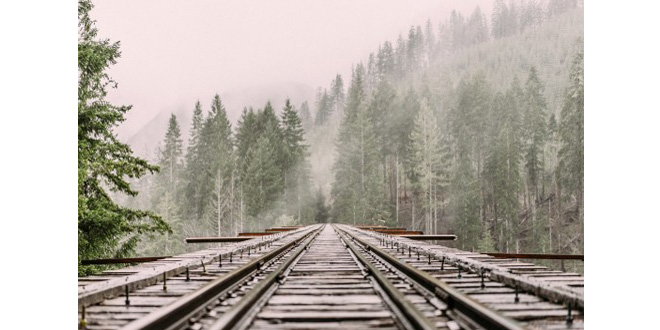
Greencarrier Top 4 benefits of rail freight
Someone once said “It doesn't matter which side of the tracks you are from. The train still rolls the same.“ This is true. The train rolls wherever the rail goes and reliability is just one of the many benefits of rail freight. In this blog post, I have listed the 4 top reasons for choosing this transport alternative when shipping your goods.
1. Shipping by rail is eco-friendly with low exhaust emissions
Today, caring for our planet simply is a must. From an environmental point of view, rail freight is an excellent transport option compared to both air freight and the combination of sea and air. The major environmental advantage of rail freight is the reduction of exhaust emissions. When comparing the CO2 emissions of the different transport modes, it is clear that rail freight is the superior winner.
Looking at the distance between China and Northern Europe, air freight consumes 139 tons CO2. The combination of sea and air consumes about 77 tons CO2. Rail freight, however, consumes only five tons CO2. In comparison, it is a drop in the ocean, meaning rail is the most eco-friendly choice if sea freight takes too long.
2. Rail freight is fast and reliable with short lead times
Compared to ocean freight, rail freight is a fast and highly reliable transport mode with shorter lead times. Let us once again have a look at the distance between China and Northern Europe.
One of the biggest challenges for companies with production in China is the long lead times to Europe when shipping by sea. Ocean transports from China to northern Europe usually take about six to seven weeks. With rail freight, it is possible to more or less cut transport times in half, which significantly reduces the lead time. This is especially beneficial to companies operating in the fast-moving consumer goods industry with high demands on short delivery times. Shorter lead times also make it is easier to forecast business operations and costs and they can have a positive impact on capital binding. (I will cover that further down in this blog post.)
Rail freight is also a very punctual mode of transport. Unlike road freight and sea freight that is subjected to congestion and bad weather condition, there is little that can obstruct the path of a rail, which reduces the risk of sudden delays.
3. Rail freight is safe and efficient with GPS tracking
Over the past couple of decades, railroad safety has improved significantly. Today, rail freight is considered to be one of the safest transport solutions. With continuous investments in railway infrastructure, rail tracks, routings, terminals, and railway border crossing stations, we are seeing a significant improvement in the overall performance of rail freight.
With GPS tracking in trains, the goods are protected in transit and losses or theft are avoided. As carriers are able to pinpoint the exact location of their customers’ shipments and follow up on milestones, they can also provide detailed information on container position and detect if anything unexpected happens during the transport.
4. Rail freight is cost-efficient and reduces the cost of capital
When shipping by rail, the lower interest costs for the tied-up capital partly cover the higher transportation costs, making rail freight a very cost-efficient shipping alternative. Let me exemplify:
If a company ships 750 containers per year, with an average cargo value of 250 000 EUR per container, and a financial cost of 5% PA, the daily interest cost is 37.52 EUR per container. Shipping goods door-to-door from China to Europe by rail typically takes about 25 days, compared to sea, which typically takes about 42 days.
This means a saving in interest cost of 708 EUR per container or 531 165 EUR per year for all 750 containers. This is money that can be used to cover extra costs and create a more agile supply chain, which can also have an additional positive impact on cost parameters and capital binding.
Learn more about Greencarrier Freight Services green and reliable rail freight solution
At
Greencarrier Freight Services, they offer FCL and LCL rail freight services between China and Europe. Fast and reliable transit times, as well as careful handling of goods, are our their priority, offering weekly departures with only 14 days of transit time and pre- and on-carriage by a feeder between China, South Korea and Japan.
